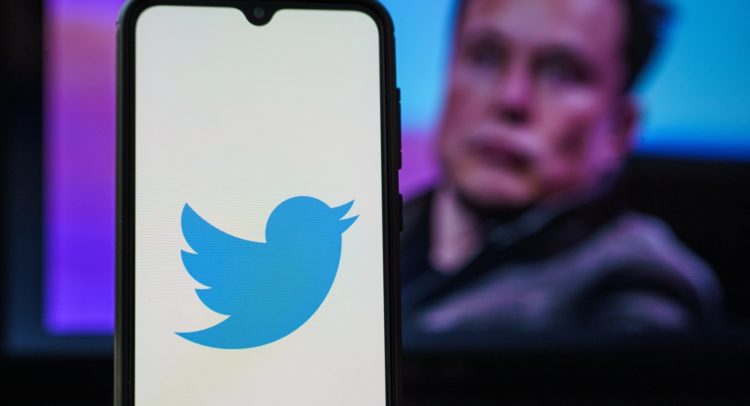Elon Musk’s planned takeover of Twitter (TWTR) is now a reality. Already, the impact can be felt throughout the world. Investors are wondering if Twitter is still a good play. Users are terrified about the potential impact Musk’s reign may have.
Musk’s publicly announced plans will mean substantial changes to Twitter’s entire culture. Whether or not that’s good news depends largely on who you talk to.
I’m currently neutral on Twitter going forward. Not so much on what I’ve heard, but what I haven’t.
The last year for Twitter demonstrates that Elon Musk’s plan to buy and take it private was the best thing that has happened to the company in months.
Last May began a plunge that lasted most of the first half of May, until the company recovered going into June and July. Another plunge followed, and lasted largely until mid-March, when Twitter started a recovery pattern that is largely continuing to this day.
The newest word about Twitter is fundamentally destabilizing the company as we know it. While Musk himself plans to make Twitter a force for free speech — calling back to the company’s original founding when its executives called it “the free speech wing of the free speech party” — new resistance is forming around the idea.
At least, so it seems at the moment. The European Union’s own internal market commissioner reached out to Musk, reminding him that several new rules about content moderation in Europe would need to be followed.
Wall Street’s Take
Turning to Wall Street, Twitter has a Hold consensus rating. That’s based on three Buys, 25 Holds, and two Sells assigned in the past three months. The average Twitter price target of $49.74 implies 2.2% upside potential.
Analyst price targets range from a low of $30 per share to a high of $60 per share.

Turnaround in Investor Sentiment
It’s safe to say that Musk’s plan to buy and take Twitter private is the fundamental driver behind share performance recently. However, investor sentiment is swinging around toward Twitter, especially lately. It’s not a perfect swing, but it’s providing weight to Twitter shares all the same.
The TipRanks 13-F Tracker shows the one point where the thesis about improving investor sentiment buckles a bit. Hedge fund involvement in Twitter has been on the decline. After hedge funds augmented their position for three quarters running, the quarter between September 2021 and December 2021 saw the first drop in about a year.

Insider trading is a much different matter. After a year largely marked by frantic selling, the last three months have seen a return to buying in rapid fashion.
As for retail investors who hold portfolios on TipRanks, they’re buying Twitter like you can buy it by the gallon. Portfolios holding Twitter were up 4% in the last seven days, and up 21.3% in the last 30 days.
How Does Twitter Make Money?
The “return to free speech” plan is certainly a stirring one, but what does it do for investors? That’s the one thing I haven’t heard much about since Musk announced plans to step in: how the company makes money.
Of course, with a plan to go private, that may be largely irrelevant going forward. If the company goes fully private, Twitter may no longer need to care about answering to its shareholders.
The latest word from the Wall Street Journal suggests that many forces are on hand that may resist such a move. From “advertisers, users, law makers, activists” to forces not yet even considered, such a plan could face a lot of headway.
However, a company that’s gone private may simply choose to eschew any market that won’t follow along with the plan to open up the platform.
Twitter already operates under something of a handicap. It’s one of the smaller social media companies around. Its short-form format also leaves itself vulnerable to a lack of monetization efforts.
Its competitors, like Alphabet’s (GOOG) YouTube and Meta Platform’s (FB) Facebook, hold far greater platform sizes. Facebook alone counts just short of two billion daily users to its credit, for example. This also means better chances for monetization.
Musk’s plan runs a very real risk of alienating advertisers who want a “safe” place to place their advertising. We already saw the impact that advertiser demands can have on platforms; just look at the YouTube “adpocalypse.” The fallout from that is still being felt on smaller YouTube channels to this day.
In a bid to create “safe” spaces, platforms are increasingly establishing confusing, even contradictory, demands and then applying them unevenly. For perhaps the first time in recorded history, a sitting president was banned from a social media service.
Musk previously noted that he wants Twitter to focus less on advertising and more on a subscription format. Right now, such a platform exists in Twitter Blue.
Twitter Blue is a $2.99 monthly service that opens up “premium features.” Will enough users be willing to pay for what once was free to enjoy free speech throughout the platform?
Concluding Views
In the end, this looks to be a move less about business and more about ideology.
That’s a large part of why I’m neutral on Twitter. When two big ideologies like this get in a battle, it’s a good plan to not have your money sitting between them.
There are quite a few unanswered questions as yet. Those answers could make or break Twitter, even as it goes private.
Discover new investment ideas with data you can trust.
Read full Disclaimer & Disclosure









